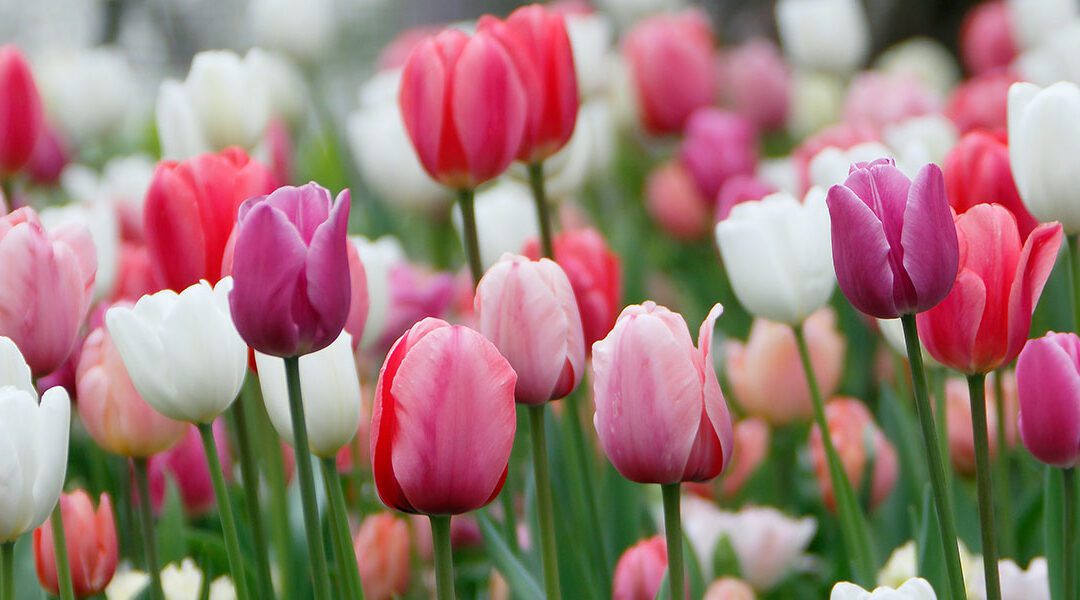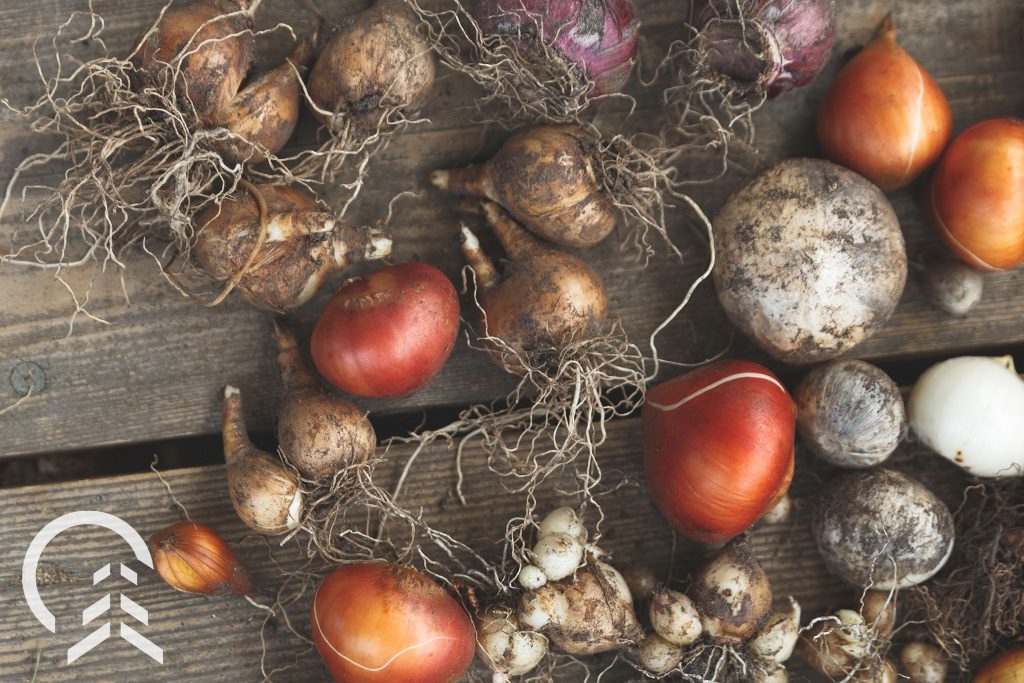Tulips are one of the most beloved flowers, symbolizing the arrival of spring with their vibrant colors and delicate shapes. As you prepare your garden for the coming season, tulips offer a variety of options in terms of colors, sizes, and bloom times. Whether you’re looking for single-hued flowers or multi-colored varieties, there’s a tulip type that will fit your garden perfectly. Here’s a quick guide to some of the most popular tulip varieties, all of which are available for planting now for a stunning spring display.
Tulip Varieties to Plant This Fall
Single Tulips These are the classic tulips most people think of when envisioning spring gardens. With simple, elegant shapes and a variety of solid colors, regular tulips are perfect for adding a bold splash of color to any garden.
Bicolor Tulips For a more dynamic look, bicolor tulips feature two or more tones in a single flower. The combination of hues creates a captivating visual effect, making them a standout choice in mixed beds or individual displays.
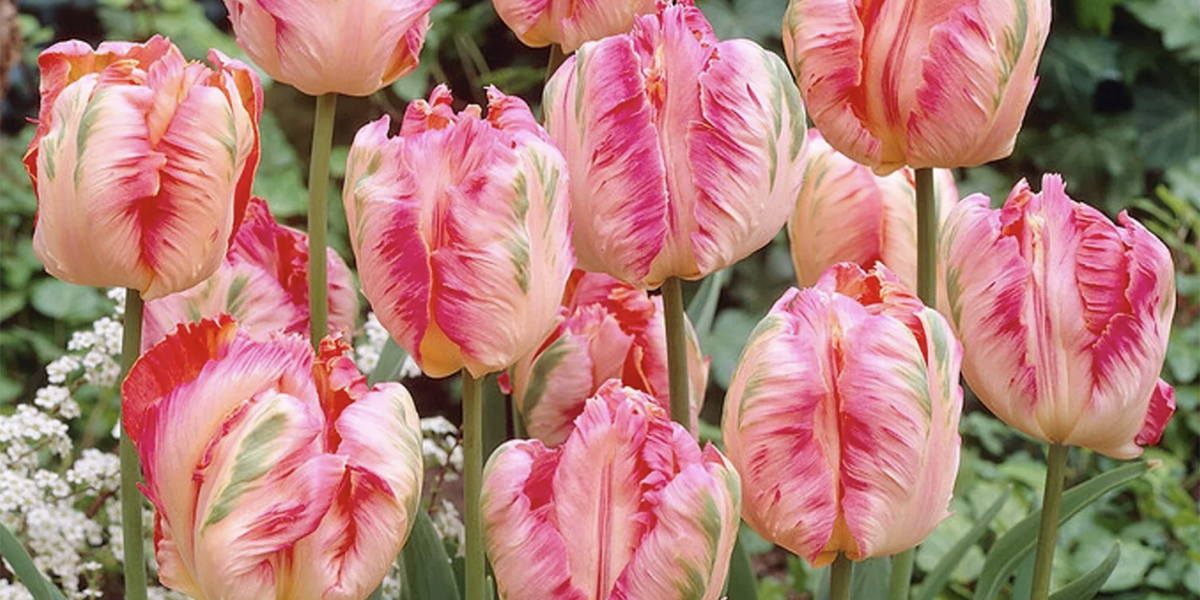
Parrot Tulips With their unique, wavy-edged petals that resemble the feathers of a parrot, parrot tulips add a whimsical, almost tropical flair to the garden. Their unusual shapes and patterns make them a favorite for gardeners looking for something out of the ordinary.
Peony Tulips As the name suggests, peony tulips bear a striking resemblance to peonies, with their large, lush blooms. These tulips have multiple layers of petals, giving them a full, romantic appearance that works well in both formal gardens and wildflower arrangements.
Double Tulips Double tulips are characterized by their dense, multi-petaled blooms that create a lush, full look. Similar to peony tulips, they offer twice the petals for a more dramatic appearance.
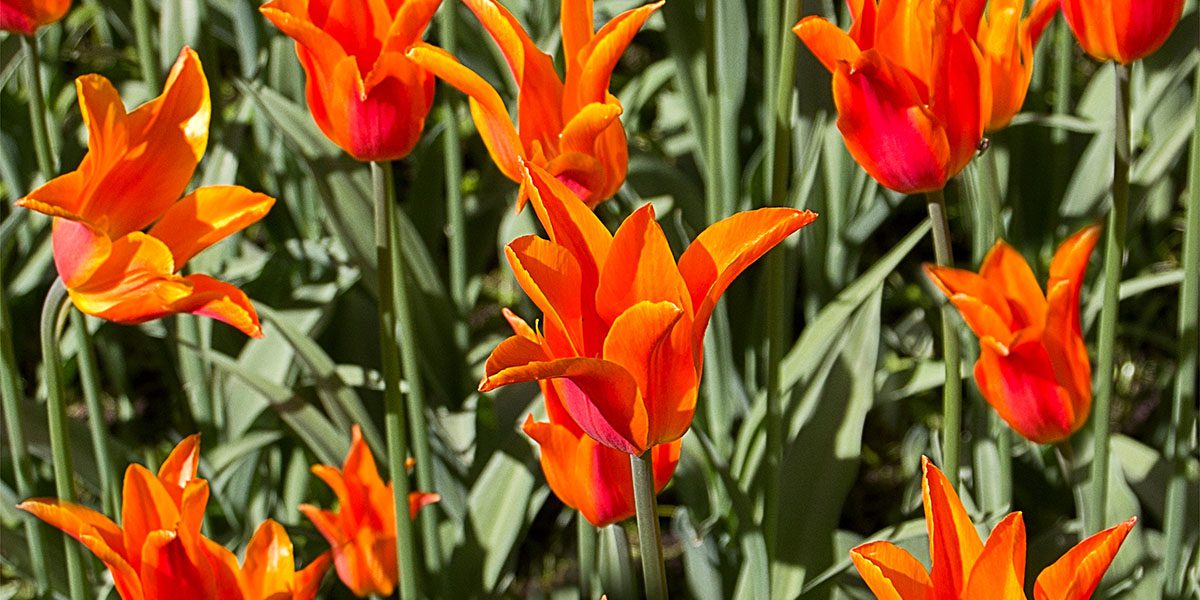
Lily Tulips Lily tulips feature a distinct, flared petal shape that closely resembles a lily. The thin, elegant petals give them a refined and graceful look, perfect for adding a touch of sophistication to any garden.
Viridiflora Tulips These unique tulips are known for the green streaks or stripes that run through their petals, creating an eye-catching contrast with the flower’s base color. The green markings give viridiflora tulips a fresh, natural appearance, making them a unique addition to any tulip bed.
Fringed Tulips As the name implies, fringed tulips have frilly edges that add a delicate, textured look to the petals. These tulips are perfect for adding a touch of elegance and refinement to your garden design.
Specialty/Botanical Tulips For gardeners looking for something more natural, botanical tulips are typically smaller and closer to their wild ancestors. They have undergone little or no hybridization, making them a great choice for those who want to cultivate a more natural, rustic garden.
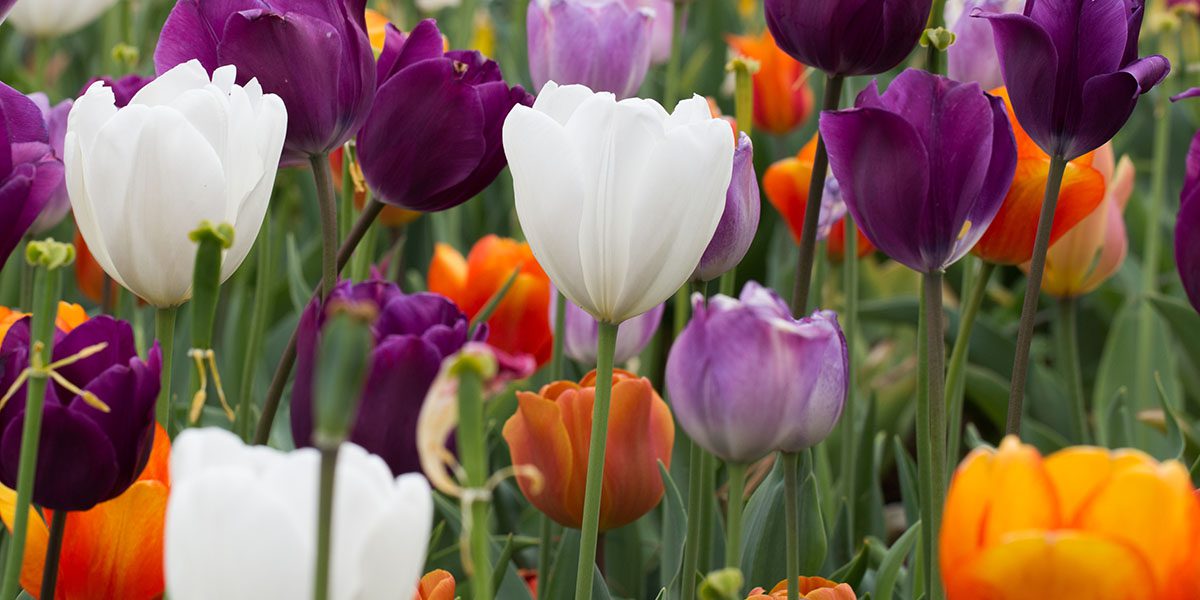
Mixed Tulip Gardens For a no-fuss planting experience, mixed tulip gardens come pre-prepared with a variety of tulips. All you need to do is plant them and enjoy the beautiful mix of colors and forms when they bloom in the spring.
Blends of Tulips If you love variety, pre-mixed tulip blends are perfect for you. These blends ensure a vibrant and diverse tulip show that will brighten up your garden throughout the spring.
Remember, while we aim to provide you with an array of beautiful tulips, the specific colors at both of our garden locations may vary. Whether you prefer a simple, classic tulip or an exotic, fringed variety, there’s a tulip for everyone. Plant your tulip bulbs now, and get ready for a dazzling spring!
How to Plant Tulip Bulbs for a Gorgeous Spring Garden
Planting tulip bulbs in the fall ensures a stunning display of flowers in the spring. Here’s a simple guide to planting your tulip bulbs for the best results:
- Timing is Key: Tulips should be planted in the fall, before the ground freezes. Ideally, plant them when the soil temperature drops below 60°F (15°C), which usually happens in late September to early November depending on your location.
- Choose the Right Location: Tulips thrive in well-draining soil and full sun. Select a spot that gets at least 6 hours of sunlight a day and avoid areas that retain too much moisture, as this can cause the bulbs to rot.
- Prepare the Soil: Loosen the soil to about 12 inches deep, and mix in compost or organic matter to ensure proper drainage and add nutrients for the bulbs.
- Planting Depth: Tulip bulbs should be planted about 6 to 8 inches deep, with the pointy end facing up. A general rule is to plant bulbs at a depth three times their height. For example, if your tulip bulb is 2 inches tall, plant it 6 inches deep.
- Spacing: Space your tulip bulbs 4 to 6 inches apart. If you’re creating a mass display, you can plant them a little closer for a fuller, more dramatic effect.
- Watering: After planting, water the bulbs well. This helps settle the soil and encourages the bulbs to begin growing roots. However, do not overwater, as tulip bulbs don’t like to sit in wet soil.
- Mulching: Once the bulbs are planted, add a layer of mulch to help protect them from extreme winter temperatures and retain moisture in the soil. Mulching also helps prevent weeds.
- Wait for Spring Magic: Now all you need is a little patience! Come spring, your tulips will burst through the soil and reward you with a brilliant array of colors.
By following these simple steps, you’ll ensure that your tulip bulbs grow healthy and vibrant, giving you a breathtaking spring garden to enjoy. Whether you’re planting regular tulips, bicolored varieties, or any of the specialty types, the time and care you put into planting this fall will pay off with a stunning display next year.
Get your bulbs in the ground now and look forward to a colorful, blossoming garden come spring!
Visit our Bloomingdale, IL or Carpentersville, IL stores for local pickup!

